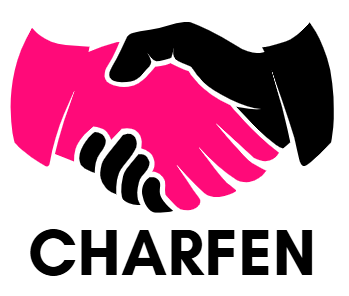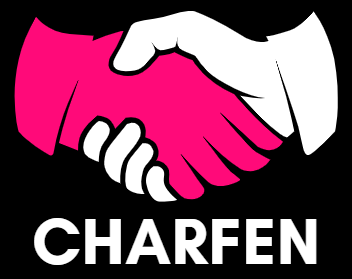Advertisement
Compliance management is a critical function for organizations of all sizes. It involves keeping track of policies, regulations, and internal controls to ensure that the business operates within legal and ethical boundaries.
Traditionally, teams relied on spreadsheets, email chains, and siloed tools to manage compliance. These approaches are slow, error-prone, and leave organizations exposed to risks such as missed deadlines, audit findings, and regulatory penalties.
Compliance management software changes this by centralizing all compliance activities in one platform. They offer a unified GRC (governance, risk, and compliance) solution that streamlines workflows, automates routine tasks, and provides real-time visibility into risk and compliance status.
In this article, we’ll explore the benefits, key features, and best practices of using compliance management software effectively.
The Challenges of Manual Compliance Management
Despite the availability of technology, many organizations still rely on manual processes to manage compliance. This creates several operational and strategic challenges:
- Fragmented Tracking: Policies, risk assessments, and audit documentation are often spread across multiple spreadsheets, email chains, and standalone files. For example, a single HR compliance policy may exist in three different versions across departments, making it difficult to ensure employees are following the latest standards.
- Audit Preparation Difficulties: When regulators request evidence, teams must scramble to gather documentation from various sources. This not only increases preparation time but also introduces the risk of missing critical records, which can result in audit findings or penalties.
- Missed Deadlines and Errors: Manual reminders and calendar tracking are prone to human error. Critical deadlines for regulatory filings, training completions, or policy reviews can be overlooked, leading to compliance breaches and potential financial or reputational damage.
- Limited Visibility: Without centralized systems, leadership has no clear view of compliance status across teams or business units. This lack of visibility makes it difficult to identify gaps, monitor progress, or make informed decisions about risk mitigation.
- Inconsistent Accountability: When responsibilities are not clearly assigned and tracked, tasks may fall through the cracks. For instance, if multiple teams are responsible for different aspects of a data privacy program but there is no central oversight, it becomes unclear who is accountable for compliance failures.
These challenges underscore the limitations of traditional methods. Organizations need a solution that consolidates compliance activities, standardizes processes, and provides real-time visibility to reduce risk and improve accountability.
What is Compliance Management Software?
Compliance management software is a platform that centralizes the administration of policies, audits, risks, and controls. Instead of juggling multiple systems, organizations can track compliance activities in one place.
Modern compliance software typically includes modules for policy management, risk management, audit tracking, and case management. It automates repetitive tasks, provides real-time dashboards, and integrates with existing business tools, giving organizations full oversight and reducing reliance on manual processes.
With compliance management software, teams can respond quickly to regulatory changes, maintain audit-ready records, and improve organizational accountability.
Core Features of Compliance Management Software
A robust compliance management software platform includes features designed to make compliance management efficient, transparent, and proactive. These features address common pain points while giving teams the tools to manage regulatory obligations effectively:
1. Policy & Document Management
The platform tracks the full lifecycle of policies, from drafting and review to approval, distribution, and employee acknowledgment. For example, an HR policy updated for new labor laws can be instantly distributed to relevant teams. At the same time, the software captures who has read and accepted it, ensuring compliance and reducing the risk of outdated procedures being followed.
2. Risk Assessment & Monitoring
Organizations can continuously identify, evaluate, and monitor risks across departments or projects. By using real-time risk dashboards, compliance officers can detect emerging threats early, prioritize mitigation efforts, and make informed decisions to prevent operational or regulatory failures.
3. Workflow Automation
Routine compliance tasks, such as training reminders, document approvals, or audit preparations, can be automated. The software can escalate overdue items to the appropriate personnel, ensuring nothing falls through the cracks and reducing the administrative burden on teams.
4. Dashboards & Reporting
Real-time dashboards provide leadership with visibility into compliance health, risk exposure, and audit readiness. For instance, executives can quickly see which teams are behind on mandatory training or which controls have gaps, enabling proactive intervention.
5. Incident & Case Management
Every compliance incident can be logged, tracked, and resolved within the system. Structured workflows ensure corrective actions are documented, timelines are met, and lessons learned are captured for continuous improvement, reducing repeat violations and penalties.
6. Framework & Template Support
Built-in templates for standards like ISO, NIST, SOX, HIPAA, and PCI DSS accelerate compliance alignment. Instead of designing frameworks from scratch, organizations can adopt pre-configured templates and customize them to their needs, saving time while ensuring adherence to industry standards.
7. Integration Support
The software connects seamlessly with existing business applications, such as HR systems, document repositories, or ERP tools. This integration ensures that compliance workflows are embedded in day-to-day operations, avoiding disruptions while centralizing data for better oversight.
Together, these features reduce manual errors, save time, and allow organizations to manage compliance proactively.
Use Cases Across Industries
Compliance management software is relevant across sectors. Organizations using such tools have seen measurable improvements in:
- Financial Services: Streamlines regulatory reporting, strengthens operational risk oversight, and maintains accountability across multiple branches.
- Healthcare: Centralizes documentation, supports patient privacy compliance, and maintains robust audit trails.
- Higher Education: Efficiently distributes policies and manages compliance training across staff and students.
- Food & Beverages: Maintains safety and hygiene standards, tracks quality audits, and documents compliance for inspections.
- Energy & Utilities: Monitors environmental regulations, workplace safety, and operational compliance across multiple sites.
- Manufacturing: Tracks safety protocols, quality standards, and vendor compliance in real time to prevent incidents and maintain certifications.
- Non-Profit Organizations: Supports regulatory reporting, donor compliance, and internal governance. Tracks grants and ensures transparency to donors and regulators.
The benefits across industries include faster audits, fewer compliance gaps, clearer accountability, cost savings, and reduced exposure to risk.
Benefits of Using Compliance Management Software
Adopting compliance management software transforms how organizations handle policies, risks, and audits:
- Centralized Oversight
Policies, risk assessments, and audit activities are managed in a single platform. Leaders gain a clear view of compliance status across departments, making it easier to spot gaps and take action.
- Fewer Errors and Less Manual Work
Automation handles tasks such as sending reminders, tracking training, and generating reports. This reduces mistakes and allows teams to focus on important compliance issues instead of repetitive administrative work.
- Faster Audit Preparation
Documentation, employee acknowledgments, and risk records are stored in one place. Teams can retrieve evidence quickly for regulators, reducing preparation time and avoiding a last-minute scramble.
- Clear Accountability Across Teams
Role-based task assignments ensure everyone knows their responsibilities. Managers can monitor completion in real time, making it easy to identify and address delays or gaps.
- Stronger Risk Management and Regulatory Confidence
Continuous monitoring and alerts help teams respond to emerging risks before they escalate. This proactive approach builds trust with regulators and stakeholders.
- Processes That Scale
As organizations expand, compliance operations scale without adding administrative burden. New departments, sites, or regulations can be incorporated into existing workflows seamlessly.
With a centralized platform, organizations can focus on strategic compliance initiatives, maintain consistent oversight, and prevent risks from becoming costly problems.
Best Practices for Implementation
Maximizing the benefits of compliance management software requires more than installing the platform:
- Assign Clear Roles: Define responsibilities across all levels to ensure accountability and prevent tasks from falling through the cracks.
- Use Built-in Frameworks and Templates: Use pre-built standards to speed up compliance alignment without compromising accuracy.
- Monitor Dashboards Regularly: Review metrics consistently to spot gaps early and address them proactively.
- Engage Employees: Encourage staff to complete training, acknowledge policies, and participate in compliance programs.
- Update Policies Continuously: Keep frameworks and documentation current to remain compliant with changing regulations.
Following these practices ensures that compliance software drives tangible improvements in both efficiency and risk management.
Conclusion
Compliance management software transforms how organizations handle policies, risks, and audits. Modern platforms centralize compliance activities, automate repetitive tasks, and provide clear visibility into risk exposure. This enables teams to reduce errors, maintain accountability, and prepare for audits with confidence.
For organizations aiming to simplify compliance processes and strengthen oversight, adopting compliance management software is a practical step toward building reliable, efficient, and proactive governance programs.












